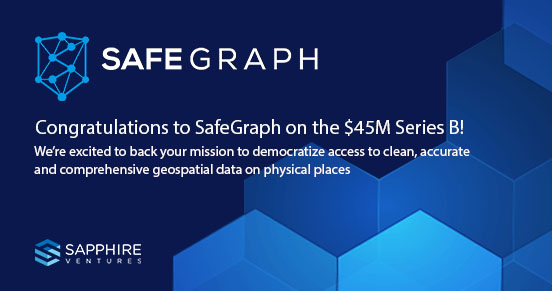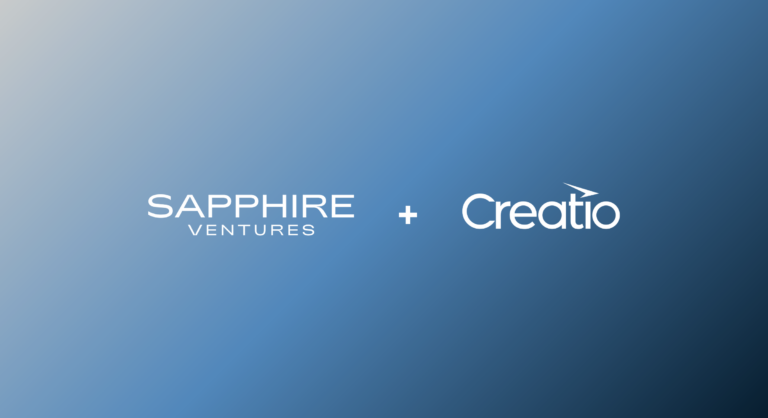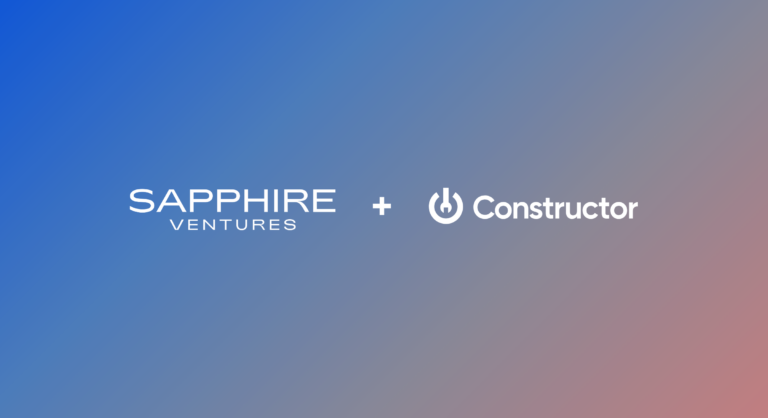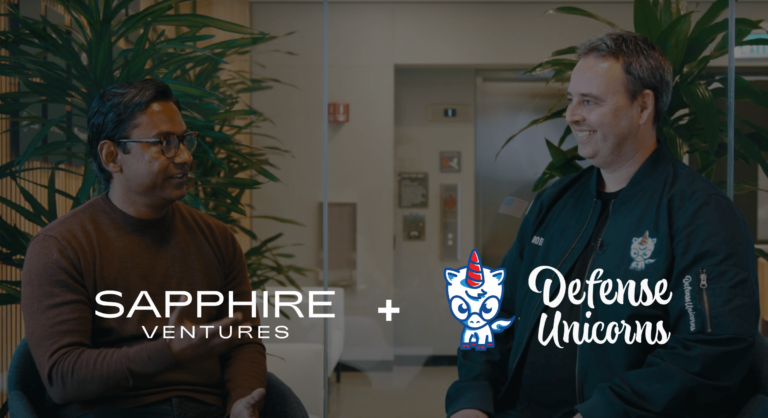How would you describe your local Starbucks? A typical coffee drinker may say it’s on the intersection of x and y streets, across from the Walgreens and is open from 7am to 6pm on weekdays. But if you’re an urban planner, commercial insurance provider or rival coffee shop owner, it might also be important to know the exact perimeters of the building, where the closest parking lot is, foot traffic patterns around this particular Starbucks and the hundreds of other attributes that can be tied to a physical place.
Today’s businesses are increasingly leveraging data, including data about physical places, to glean insights to better understand customers and improve decision making. But the process of collecting, verifying and cleansing large data sets is not only time consuming and expensive, but also prone to errors. It has been estimated that 80% of the time spent on data projects goes to cleaning the data, and of course, as the adage goes, “garbage in, garbage out” applies to data projects.
Enter SafeGraph, a pure-play data-as-a-service (“DaaS”) company focused on providing the most accurate information about physical places to data scientists. SafeGraph provides valuable data on over eight million physical places in the U.S. and Canada, and across three broad categories: point-of-interest (POI), spatial hierarchy and foot traffic data. Today, SafeGraph supports global enterprises across multiple industries and customers including Amazon, ESRI, Pepsi, Starbucks, Verizon and United Health.
That’s why we are excited to back SafeGraph and lead the company’s $45M Series B, supporting the team’s mission to democratize access to clean, accurate and comprehensive geospatial data on physical places.
Growing demand for data on physical places
Today, geospatial data is extensively used in applications across agriculture, construction, transportation, utilities, retail and public health. COVID has highlighted the importance and value of accurate places data, which is why since the onset of the pandemic, SafeGraph has provided free data to government organizations, non-profits, academic research institutions and researchers. The CDC, for example, uses SafeGraph data daily to analyze movement of communities most at risk for virus transmission, capacity limits for healthcare sites across the U.S., foot traffic to businesses and the efficacy of social distancing measures.
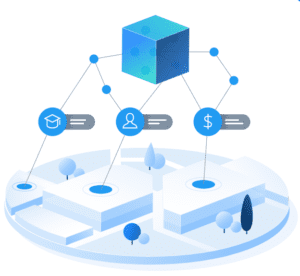
We expect both the supply and demand for location data to increase. Vast amounts of spatial and non-spatial data are being created and integrated through mobile phones, wearables, IoT, robots and drones. In addition, advancements in 5G technologies and the deployment of 5G networks is also expected to increase the supply of highly accurate and precise geospatial data.
In the past, location data was primarily used by the advertising industry, which has had lower thresholds for accuracy. SafeGraph’s ability to deliver industry leading accuracy has and will continue to unlock new use cases. At the same time, data science as a function is growing rapidly as companies seek to unlock value from their proprietary first-party data and augment with quality third-party data. In 2020, 67% of companies expanded their data science teams and the demand for data scientists increased by an average of 50% across major industries.
At Sapphire, we evaluated hundreds of businesses over the past decade that enable companies to use first-party data more effectively. More recently, companies in this space have seen rapid growth across categories, including data infrastructure (data warehouse and data lake) companies like Snowflake, Cloudera, Databricks and Dremio**, middleware companies like LiveRamp, consumption layer (BI, data science and analyst) companies like Alteryx*, Looker*, Tableau and Thoughtspot**, data operations tools like Matillion** and Alation** and log management solutions like Sumo Logic* and Splunk. The confluence of market needs and the simultaneous existence and growth of all these tools will propel the need for high quality raw data.
Leadership and differentiation in the DaaS space
Increasing quantities and sources of data directly benefit SafeGraph as more geospatial data means broader use cases and better insights for its customers. But due to the sheer quantity of attributes across multiple hierarchies that make up a place, it’s very challenging to tie geospatial data together. Location data is also constantly changing, which has been especially evident during the pandemic as businesses shut down–some temporarily and others permanently. SafeGraph is able to alleviate this problem by maintaining a database of highly accurate location data and offering it in a way that’s easily digestible for data science teams.
Despite having SaaS-like metrics, SafeGraph is not a SaaS company. Instead, it’s a DaaS business that doesn’t sell applications, only data. SafeGraph’s competitive advantage is that it automatically collects and cleanses large quantities of data through advanced in-house machine learning capabilities that yield high veracity data. The platform continues to improve as remediated errors are fed back into the system to make it smarter. For these reasons, SafeGraph operates a low-cost model with great gross margins and impressive agility–particularly in adding and updating information more frequently than other data providers that rely on human verification. 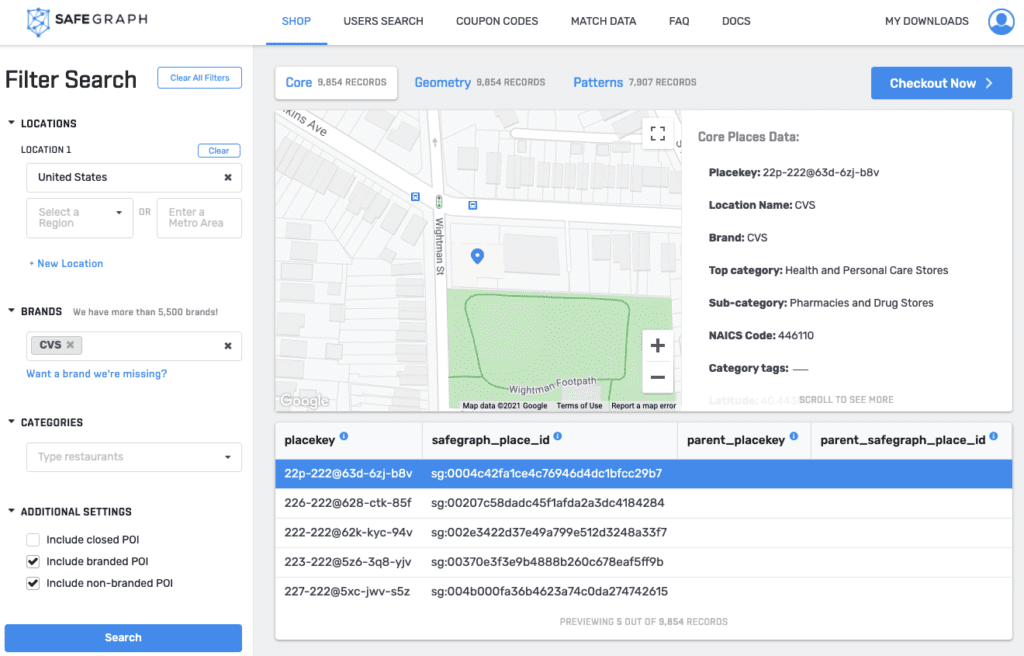
* Sapphire portfolio companies that have exited
** Current Sapphire portfolio companies
Building an industry standard for places data
SafeGraph is taking the additional step to democratize data access by creating a new industry standard. A common challenge with places data is the lack of standardization when referring to a place. Customers that purchase from multiple vendors have to match different datasets together by name, address, geocode or data-provider IDs. The more data is generated and the more fragmented the data provider market is, the more painful this process becomes.
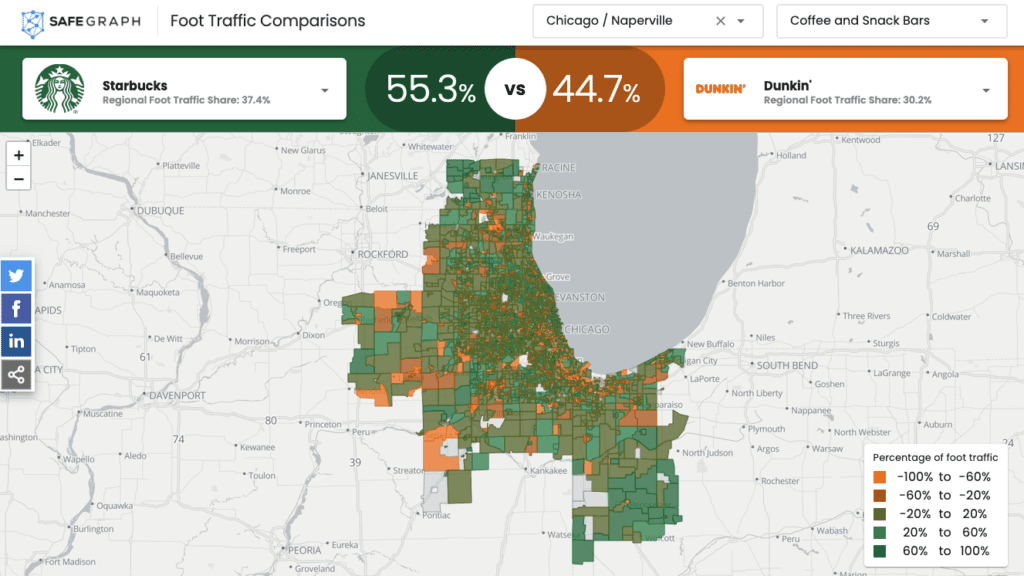
That’s why SafeGraph introduced PlaceKey, a free open source universal standard identifier for any physical place so that any data tied to those places can be easily shared across organizations–just like Dun & Bradstreet’s DUNS number or LiveRamp’s unique ID for people.
Placekey was made available to the public in October 2020, and has already seen tremendous interest and traction with over 1,000 companies signed up already, including big data companies like Neustar and ESRI. We believe that PlaceKey will significantly advance the movement towards open data that will benefit everyone using place data.
An iconic leader and company builder

SafeGraph founder and CEO Auren Hoffman is a seasoned entrepreneur with over 15 years of experience in the data space. Prior to starting SafeGraph in 2016, Auren built and sold five companies, including LiveRamp, which was acquired by Acxiom in 2014. Today, LiveRamp is the biggest middleware business for customer data for the marketing ecosystem. It’s also a public company (NYSE:RAMP) with $400M+ in revenue and a $5B market cap. In addition, Auren has been an active angel investor in over 120 companies, many of which are in the data space.
We believe Auren is one of those rare leaders who has the elusive triple threat we often look for: experience, vision and execution. Auren is on a mission to build a Company of Consequence at the intersection of data and place, and we at Sapphire could not be more thrilled to partner along SafeGraph’s journey.


